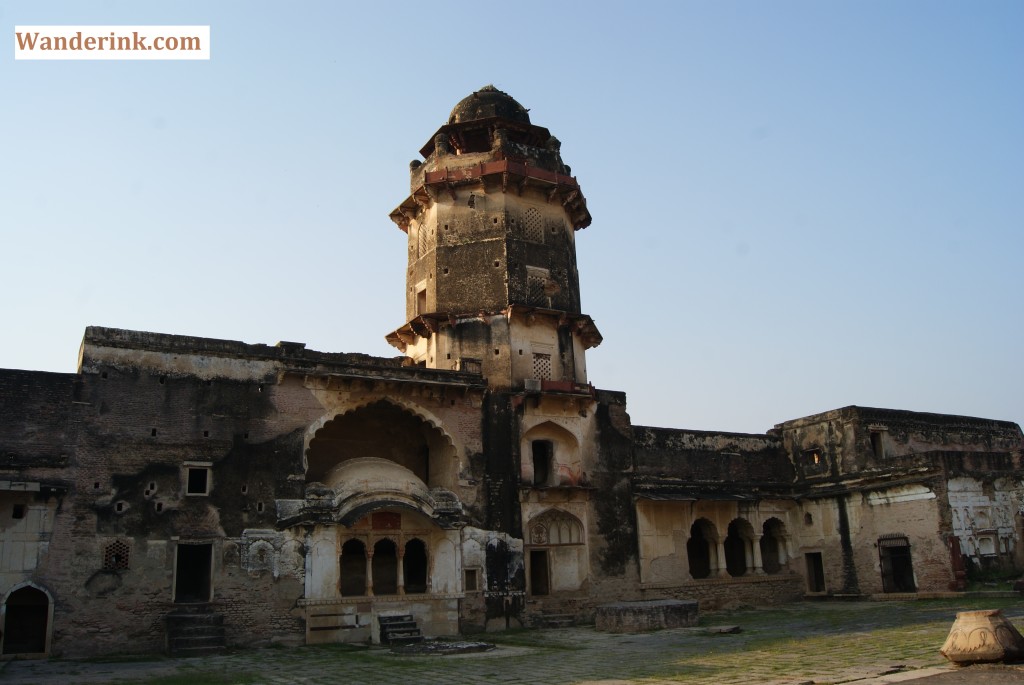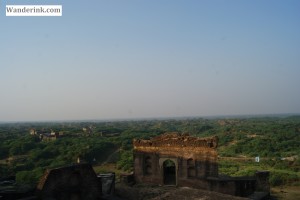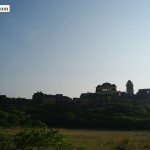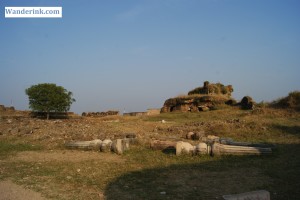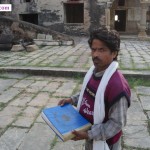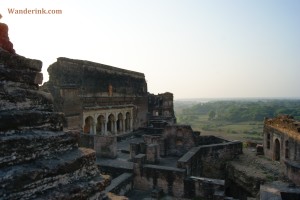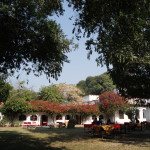The river Chambal has been found to meander continuously towards the right during the past 28 years (1972 – 2000) at a distance of 140 kilometres away from the origin. ‘Stream dynamics change analysis of River Chambal using remote sensing and GIS techniques’, International Journal of Geomatics and Geosciences, 2011.
Jeep drivers are icons in hinterland India. Little boys grow up idolising them, hoping to be one someday. An ambition shared many years ago. But in the rickety racket – with curtains – where I sat bouncing, I realised that non-existent shock absorbers and duct-taped steering linkages may not have added to a, dream run. Half an hour ago I had crossed the Chambal River on my way to the Ater Fort. My guide cum naturalist had assured me the jeep would be waiting – precisely what we ended up doing for half an hour. My bon mot to the effect was met with a good-natured shrug – the kind accorded to slick piffles.
“There was a problem with the axle.” The icon made a straight statement, not an apology, nor an excuse, when he finally turned up.
“Does your vehicle have one?” I was to ask later as we tail-boned the upholstery across a dip-surge cleared over ravines passing off for a road.
The topography fits snug with the bloody legend of the Chambal: formed from the blood of cows sacrificed by a king to please the gods for war supremacy. The alarmed priests cursed the king and the river – why there are no temples along the banks. The crimson tales are myth of course. The truth is that the scrub-forested riverbanks are shallow and unstable, the result of centuries of soil erosion. It shifts positions, changes shape, razes itself and reforms with the rise and ebb of water. A kind of living maze which lent it secluded by default. Once upon a time handy for bandits fleeing from the fumbling arm of law. The river meanders on, changing its course every year as geographical information systems have shown. The phenomenon, in the long run, was to be responsible for the desertion of Fort Ater.
The regal silhouette is suddenly visible on a distant motte. An unmanned entrance leads to a majestic gateway, the towering arches bearing close semblance to the Mughal architecture of the period. Construction of the Fort was begun by King Badan Singh, of the Bhadoria dynasty, in 1644 and eventually completed by Maha Singh in 1668. It is replete with all the elements of a typical Mughal palace – the Diwan-I-Am (or the ‘hall of public audience’) where the king sat meting out justice, the Diwan-I-Khas (the ‘hall of private discussions’) where he met the ministers and army chiefs as well as the residences of queens, entertainment quarters, harems and prayer halls.
Save for a watchman of sorts, Chaggan, there was nobody else in sight. The golden rays of the setting sun waged a losing battle to brighten up the time-ravaged ramparts and turrets. A kind of eerie quiet seeped through the surroundings. Making the most of it was a couple of parakeets necking in the soffit. Once you pass by the double-arched entrance, there are some subterranean openings – possibly sally-ports in the event of an attack or prisoner dungeons. You reach an enceinte which must have been a garden; row after row of exquisitely foliated sandstone pillars – obviously a collapsed colonnade – lie about scattered. A smaller arched entrance peeling bricks leads to another courtyard where the king would have met his subjects. Here you can see the Diwan-I-Am with the mandatory water body in the front which acted as a sort of security measure. Further on there was the ‘Satmanjila’, a watchtower, from where the guards could keep an eye on the shifting ravines. I scrambled up several precariously narrow flights of stairs in the donjon which opened to an abacus; the view of the Chambal ravine is splendid from here.
Chaggan came with me, pari passu, everywhere. Even up flights of narrow stairs and down dark passages. All the while he lugged along a big blue ledger. A jejune at first sight, he remained unhelpful and incommunicado till the end. I began to wonder maybe he was keeping an eye on me that I do not pick at a non-existent parget or maybe not cart away a Corinthian. The gem that he was, when I sat down to rest finally, he came and sat near me. He then very ceremoniously opened the fat blue one, with all the reverence of revealing a Narnian getaway possibly right under the Ater. It was a logbook maintained by the Archaeological Survey of India for visitors to note their entry. And space for remarks. In mine I thanked the ASI for stopping whatever conservation efforts they had undertaken here. Over one of the very few trabeate entrances – the kind used mostly in temple architecture (possibly leading into a temple) – a series of petal-shaped indentations had crumbled away. The repair work was fuddled right at the cusp. My gratitude was in order.
Otherwise the Ater was a marvel. It was an architectural delight – the terraced residences and elevated courtyards, labyrinthine walkways and secretive seraglios. Open apadanas and pretty belvederes, the ornate cupolas and cornices. It ought to be right up there with the forts of Gwalior and Jaipur. But unlike them, it doesn’t occupy reams in tourist glossies nor is it adequately promoted by tourism bodies. Probably lack of original references to design – or an issue of right competence – the ASI has limited its role in the conservation to keeping a tab on visitor numbers. Or it’s just a myopic refusal to see merit. The locals have their hopes pinned high on the Ater Fort and they are aware of its potential to be a tourist lure.
“Everybody I’ve taken around the Fort have been mesmerised by its design as well as dimension,” said my guide. (The Ater Fort measures an impressive 700 feet from east to west and 325 feet from north to south.) “They go back and send their friends who are interested. Its fame is mostly word-of-mouth, spread by heritage buffs.”
Well, somebody is doing the job.
Best from: Chambal Safari Lodge, a woody eco-resort spread across 35 acres of an erstwhile venue for cattle fairs. There are rooms and standalone traditional cottages with tastefully done up interior, boasting all creature comforts and thankfully no television. The Lodge serves home-cooked meals from generations-old recipes, prepared from organically grown, locally procured ingredients. All the cottages have private verandas and sit-outs, some opening towards the more secluded thickets. The generally timid nilgai seems not to mind your presence here.
Address: Chambal Safari Lodge, Mela Kothi, Jarar, Agra. Phone: 0091 9997066002 Website: www.chambalsafari.com


